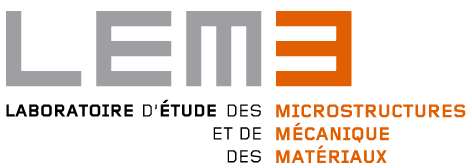- 1st floor meeting room, LEM3 – main site, 7 rue Félix Savart, 57070 Metz
Under the aegis of the Medicis programme



Abstract
Titanium and titanium alloys have been extremely popular as orthopaedic and dental implants as they possess a high strength-to-weight ratio, superior corrosion resistance, excellent biocompatibility, and appropriate elastic modulus close to the natural bones. 3D printing technology enables the creation of highly porous and connecting bone reconstruction implants with ease of personalization. To increase the in vivo lifetime of the implants, further surface modification is required that can facilitate bone integration and healing. Nanoscale modification is an excellent pathway to enhance the adsorption of protein and expedite osteogenic cell migration, and early bone formation onto the implants.
We developed a uniformly distributed coating of ZnO nanowires (NWs) on 2D plates and 3D lattices of Ti-6Al-4V made by selective laser melting. The unmelted particles of the Ti-6Al-4V were removed by chemical polishing to achieve uniform deposition of the coating. The polishing parameters in the 3D lattices were optimized to efficiently remove the unmelted particles from the inside of the lattices. Subsequently, ZnO nanoparticles were deposited and ZnO NWs were grown by hydrothermal method. Raman spectroscopy and XRD characterizations confirmed the formation ZnO NWs, whereas SEM and EDX analyses showed uniform coating on the outside as well as the inside of the 3D lattices despite the difference in apparent surface roughness in various parts of the lattice.
Nanostructures of ZnO are already known for their antibacterial activity. The ZnO NWs coating showed excellent antibacterial activity against gram positive and negative bacteria through mechanical killing by sharp edges and release killing by dissolution of Zn2+ and/or reactive oxygen species (ROS) production. The dual-antibacterial activity will help to eliminate bacterial contamination on the implants from the surroundings before surgery and bacterial proliferation during or after surgery. The study indicates important progress toward the engineering of large-area uniform coating on complicated 3D lattices to combat bacterial infection in biomedical implants.
To attend on teams
It is also possible to attend the seminar on Microsoft Teams.





